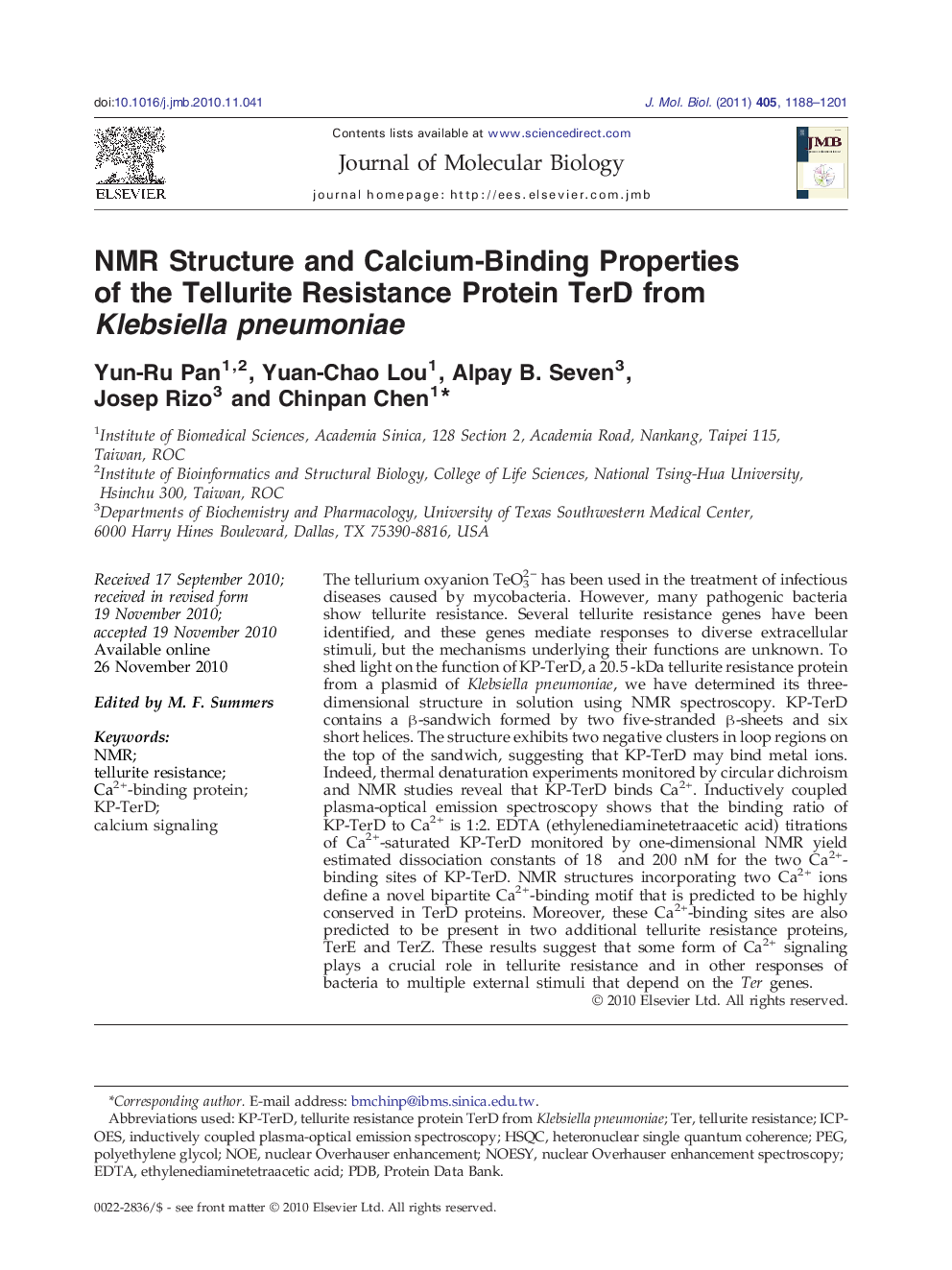| کد مقاله | کد نشریه | سال انتشار | مقاله انگلیسی | نسخه تمام متن |
|---|---|---|---|---|
| 2185491 | 1095983 | 2011 | 14 صفحه PDF | دانلود رایگان |

The tellurium oxyanion TeO32− has been used in the treatment of infectious diseases caused by mycobacteria. However, many pathogenic bacteria show tellurite resistance. Several tellurite resistance genes have been identified, and these genes mediate responses to diverse extracellular stimuli, but the mechanisms underlying their functions are unknown. To shed light on the function of KP-TerD, a 20.5 -kDa tellurite resistance protein from a plasmid of Klebsiella pneumoniae, we have determined its three-dimensional structure in solution using NMR spectroscopy. KP-TerD contains a β-sandwich formed by two five-stranded β-sheets and six short helices. The structure exhibits two negative clusters in loop regions on the top of the sandwich, suggesting that KP-TerD may bind metal ions. Indeed, thermal denaturation experiments monitored by circular dichroism and NMR studies reveal that KP-TerD binds Ca2+. Inductively coupled plasma-optical emission spectroscopy shows that the binding ratio of KP-TerD to Ca2+ is 1:2. EDTA (ethylenediaminetetraacetic acid) titrations of Ca2+-saturated KP-TerD monitored by one-dimensional NMR yield estimated dissociation constants of 18 and 200 nM for the two Ca2+-binding sites of KP-TerD. NMR structures incorporating two Ca2+ ions define a novel bipartite Ca2+-binding motif that is predicted to be highly conserved in TerD proteins. Moreover, these Ca2+-binding sites are also predicted to be present in two additional tellurite resistance proteins, TerE and TerZ. These results suggest that some form of Ca2+ signaling plays a crucial role in tellurite resistance and in other responses of bacteria to multiple external stimuli that depend on the Ter genes.
Graphical AbstractFigure optionsDownload high-quality image (236 K)Download as PowerPoint slideResearch Highlights
► NMR structure of the 20 -kDa tellurite resistance protein KP-TerD from K. pneumoniae.
► KP-TerD contains a novel bipartite Ca2+-binding motif also present in TerE and TerZ.
► One of the dissociation constants (200 nM) is ideal for Ca2+ signaling in bacteria.
► Ca2+ signaling may play a key role in the Ter-mediated response to external stimuli.
Journal: Journal of Molecular Biology - Volume 405, Issue 5, 4 February 2011, Pages 1188–1201